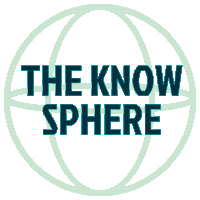YouTube Shorts Just Got an AI Boost: Meet Veo 2
AI-generated videos are stepping up, and YouTube Shorts is leading the charge. Google DeepMind’s latest video model, Veo 2, is now integrated into YouTube Shorts, giving creators a powerful new tool to generate AI-driven video clips. This game-changing update brings a new level of creativity and accessibility to short-form content creation.
What Is Veo 2?
Veo 2 is Google’s response to OpenAI’s Sora, a text-to-video AI model that has been making waves in the AI community. While YouTube already introduced AI-generated backgrounds through Dream Screen, Veo 2 takes things further—allowing creators to generate standalone video clips that can be seamlessly added to their Shorts.
With Veo 2, YouTube is not only catching up with AI-powered video innovations but also expanding the creative possibilities for everyday users. Unlike traditional video editing software, which requires technical knowledge and time-consuming edits, Veo 2 simplifies the process, making high-quality, AI-generated videos available at the click of a button. This means creators can now experiment with storytelling, visual effects, and artistic expression in ways that were previously out of reach without advanced editing skills.
How Veo 2 Enhances AI-Generated Video
According to YouTube Director of Product Dina Berrada, Veo 2 delivers faster AI-powered video generation with enhanced realism. The model understands real-world physics and human movement better, leading to more natural, high-quality video outputs. On top of that, creators can customize their clips by specifying different styles, cinematic effects, and lenses—making it easier to craft eye-catching, unique content.
The ability to generate dynamic video clips with increased realism and better physics modeling is a major leap forward for AI-generated media. This ensures that movement, lighting, and textures appear more natural, bringing AI content closer to the polished look of professionally edited videos. With Veo 2, AI-generated video is no longer just a gimmick—it’s becoming a legitimate tool for creators looking to push the boundaries of visual storytelling.
AI Transparency: Watermarking & Labeling
As AI-generated content becomes more prevalent, concerns around transparency grow. YouTube is addressing this by integrating DeepMind’s SynthID, an AI watermarking tool that embeds an invisible identifier into AI-generated content. Additionally, AI-created videos will be clearly labeled to ensure viewers know they were made using artificial intelligence. While this is a step in the right direction, challenges around misinformation and synthetic media remain.
The implementation of watermarking and labeling is a significant move in tackling ethical concerns surrounding AI-generated content. As more AI tools become available, the potential for deepfakes and misleading videos increases. YouTube’s proactive approach in marking AI-generated media could help set a standard for responsible AI content creation, ensuring that audiences can differentiate between AI-assisted videos and traditional filmed content.
How to Use Veo 2 in YouTube Shorts
If you’re a creator eager to try out Veo 2, here’s how to access it:
- Open the YouTube Shorts camera.
- Select Green Screen mode.
- Navigate to Dream Screen.
- Enter a text prompt, and let the AI generate a video.
With these simple steps, content creators can bring their ideas to life in seconds. Whether they want to add an artistic touch, create visually engaging content, or even experiment with futuristic concepts, Veo 2 provides an easy and intuitive way to explore AI-assisted video generation.
When & Where Is It Available?
Veo 2’s integration with YouTube Shorts launches this Thursday (20th Feb) for creators in the U.S., Canada, Australia, and New Zealand. YouTube has plans to expand access in the future, meaning more creators worldwide will soon be able to explore its potential.
As YouTube continues rolling out AI-powered tools, it’s likely that Veo 2’s capabilities will evolve. Future updates may bring higher resolution outputs, longer video generation times, and more customization features. This is just the beginning of AI-driven content creation on YouTube, and the possibilities are endless.
Final Thoughts: A New Era for AI Video?
With Veo 2, AI video creation is no longer just for tech-savvy professionals—it’s becoming more accessible, intuitive, and creative than ever. This update marks another step toward AI-powered content shaping the future of digital storytelling. As AI tools continue to evolve, it will be fascinating to see how creators push the boundaries of what’s possible.
The future of video creation is rapidly changing, and AI is at the forefront of this transformation. Whether you’re an aspiring content creator, a professional filmmaker, or just curious about AI’s role in media, Veo 2 is a glimpse into what’s next. As AI continues to integrate into creative workflows, we may see an era where traditional video production and AI-driven tools work hand in hand to create compelling, high-quality content at an unprecedented scale.
What do you think about AI-generated videos in YouTube Shorts? Excited or skeptical? Let’s discuss!
